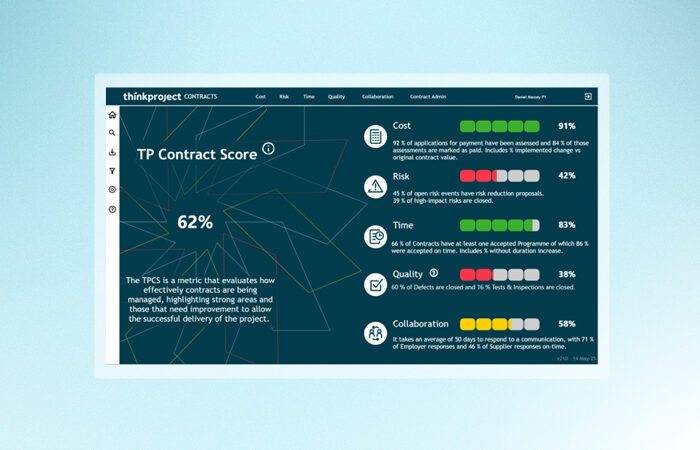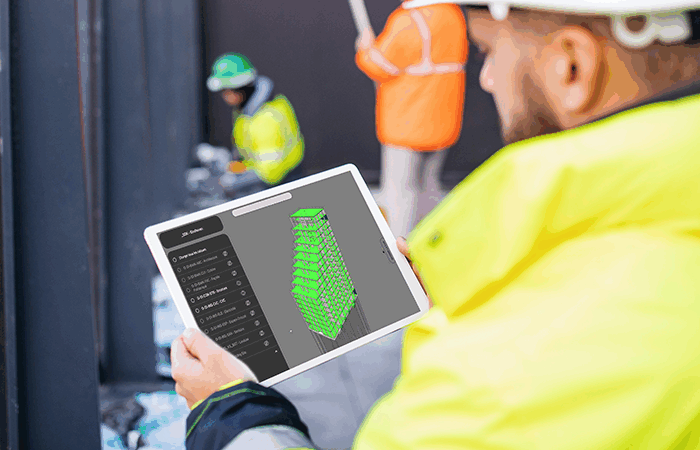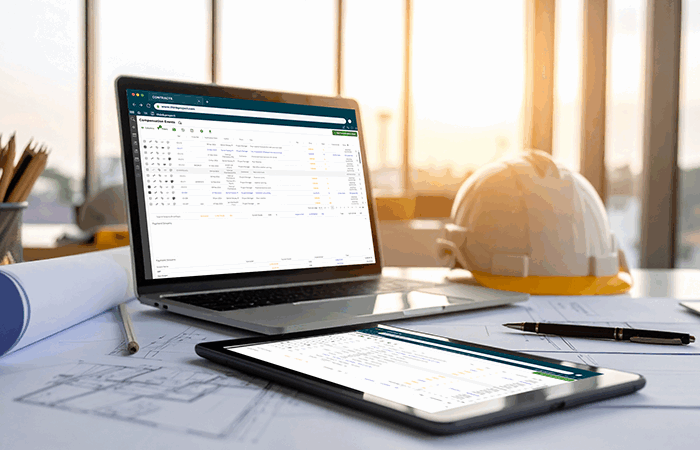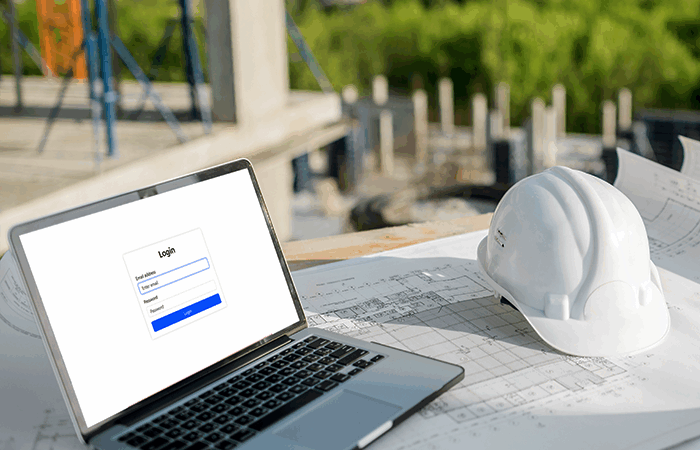
Handover Management in construction – a smooth transition for project success
Handover management in construction is a critical process that ensures a seamless transition from contractors to asset owners. A well-executed handover prevents operational disruptions, minimizes risks, and enhances project efficiency. On the other hand, poor handover management can result in delays, budget overruns, and compliance issues.
In this blog, we explore the fundamentals of handover management in construction, why it matters, and what best practices you should follow for a smooth transition. Whether you’re a project manager, contractor, or asset owners, optimizing handover processes will help complete projects successfully and set them up for long-term success.

What is handover management in construction?
Handover management in construction refers to the structured process of transferring a project from the construction team to the asset owner, facility manager, or end-user. It includes delivering all necessary documentation, verifying quality standards, and ensuring the new owner understands how to operate and maintain the asset.
The key stakeholders involved in the handover process are usually:
- Contractors and subcontractors – Responsible for completing construction work and providing necessary documentation.
- Project managers – Oversee the handover process, ensuring all deliverables are met.
- Facility managers – Receive the project and take over responsibility for its operation.
- Regulatory bodies – May be involved in inspections and approvals to ensure compliance with safety and quality standards.
7 challenges of a successful handover management
Although a vital task, information handover does not come without challenges. From files stored in the wrong format, to having several versions of the same file – contractors can earnestly say that they have met some odd situations in their time.
The complexity of construction projects and the fact that there are usually many stakeholders involved may lead to the handover process being slowed down or stopped for various reasons, such as:
3 key elements of a successful construction handover
So how can you overcome all those challenges associated with handover management in construction?
For a seamless handover, several essential elements must be in place:
1. Comprehensive Documentation: A complete set of documents should be prepared and handed over to the asset owner. These typically include:
- As-built drawings and specifications
- Operation and maintenance (O&M) manuals
- Warranty and guarantee documents
- Safety certifications and compliance records
- Defect and snagging lists
2. Final inspections and quality checks: Before the handover, a final walkthrough should be conducted to verify that all work meets the agreed-upon standards. This includes:
- Identifying and rectifying any defects or snags
- Testing critical systems such as HVAC, electrical, and plumbing
- Ensuring health and safety measures are in place
3. Training and operational support: Providing training sessions for facility managers and end-users ensures they can operate and maintain the facility correctly. This step reduces the risk of future operational issues and extends the lifespan of the building.
Best practices for effective handover management in construction
1. Establish a structured handover plan
Handover management should not be treated as an afterthought. A structured plan should be created at the beginning of the project, outlining:
- Handover timelines and milestones
- Required documentation and inspections
- Stakeholder responsibilities and communication channels
2. Use digital tools for efficiency
Manual paperwork can lead to delays and lost information. Digital handover management solutions help streamline the process by:
- Storing all documents in a centralized platform
- Automating checklists and approvals
- Allowing real-time updates and collaboration among stakeholders
- Creating an automated data collection from a CDE
- Seamless integration with asset management solution
While choosing different digital tools to manage the different stages of a construction project is an option, a connected digital platform can better support a smooth handover process. An integrated solution can ensure data accuracy, as well as aligning the various stakeholders (contractors, owners, end-users) on processes and workflows.
3. Engage stakeholders early
Asset owners, contractors, and facility managers should be involved in the handover process from the early stages. Regular communication ensures that all expectations are aligned, reducing last-minute surprises.
Checklist for a smooth construction handover
Before closing out a project, ensure the following checklist is completed:
- All required documentation is compiled and handed over
- Final inspections and snagging are completed
- All safety certifications and regulatory approvals are in place
- Asset owners and facility managers receive adequate training
- Handover meeting is conducted to address any remaining concerns
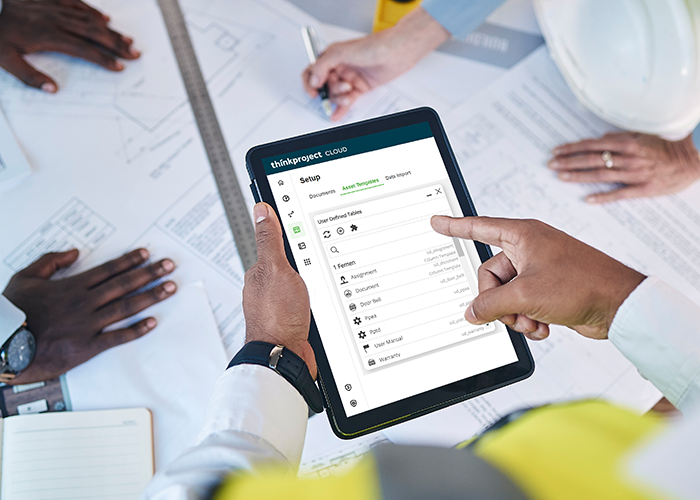
Handover management with Thinkproject
The Thinkproject Built Asset Lifecycle platform provides a connected platform where general contractors, asset owners and other stakeholders can manage the entire lifecycle of a built asset – from planning to development, handover and asset management. The platform integrates the capabilities of a CDE with those of a handover management solution, as well as with an asset management solution. This integration allows the automated data collection from the CDE based on workflows and validations within a handover solution, also ensuring seamless data availability in the asset management solution.
Thinkproject Handover facilitates the seamless transfer of validated, accurate, and comprehensive information from the construction phase to asset owners.
This ensures that data is delivered in the desired structure and integrates smoothly into the asset management solution, enhancing operational efficiency. The solution gives users access to:
- Customizable asset templates: Define tailored asset templates, set rules for automatic documentation linking, and streamline data management.
- Comprehensive asset register: Centralize asset records, apply advanced search filters, and validate data accuracy throughout construction.
- High-Quality data delivery: Export structured, industry-standard data for seamless integration with asset management tools.
Ensuring a seamless transition in construction projects
Effective handover management in construction is key to delivering successful projects. By prioritizing documentation, inspections, stakeholder engagement, and technology, construction teams can minimize risks and ensure a smooth transition.
A well-managed handover not only benefits the client but also enhances the reputation of the contractor, leading to stronger relationships and future business opportunities. Implement these best practices to make your next construction handover a seamless and stress-free process.

